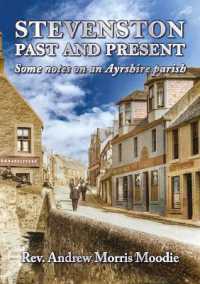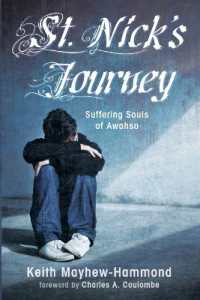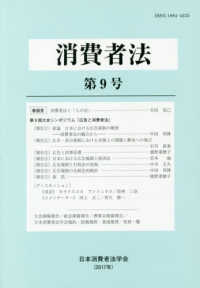- ホーム
- > 洋書
- > 英文書
- > Literary Criticism
Full Description
Financial Gothic explores the persistent concern of American Gothic literature with finance - and finance as having always been a gothic phenomenon - from 1880 to the present day. The study reads Frankensteinian monsters, haunted houses, vampires and zombies in American literature and film as cultural responses to such twentieth and twenty-first century financial phenomena as the 1929 Wall Street Crash, post-war housing debt, financial deregulation, and the 2008 Credit Crunch. Consideration is also given to the pre-existing consensus on racial readings of American gothic, and how these interpretations of the slave trade can be expanded upon in conversation with their financial contexts. Drawing on contemporary insights into financialised understandings of economics within the humanities, new analysis of finance as an inherently gothic phenomenon, and archival work completed on the Library of Congress's Black History Collection, Financial Gothic highlights an as-yet-unrecognised dimension of haunting and monstrosity within American gothic fiction.
Contents
Acknowledgements
List of Figures
Introduction: Gothic Finance and Financial Gothic
Chapter One: 'It's Alive!': The 1929 Wall Street Crash and Pulp/Popular/Political Monsters
Chapter Two: 'The Evil is the House Itself': Credit, Citizenship, and the Postwar Haunting House
Chapter Three: Deregulation Sucks: Mass Consumption of Liquidity and the Deregulated Vampire
Chapter Four: 'Myself is Fabricated, An Aberration': Late-Capitalism and the Hyperreal Vampire
Chapter Five: Mindless Consumers: The 2008 Crash and the Post-Millennial Zombie
Conclusion: Monsterized Capitalism and Capitalist Monsters
Works Cited
Glossary of Financial Terms








